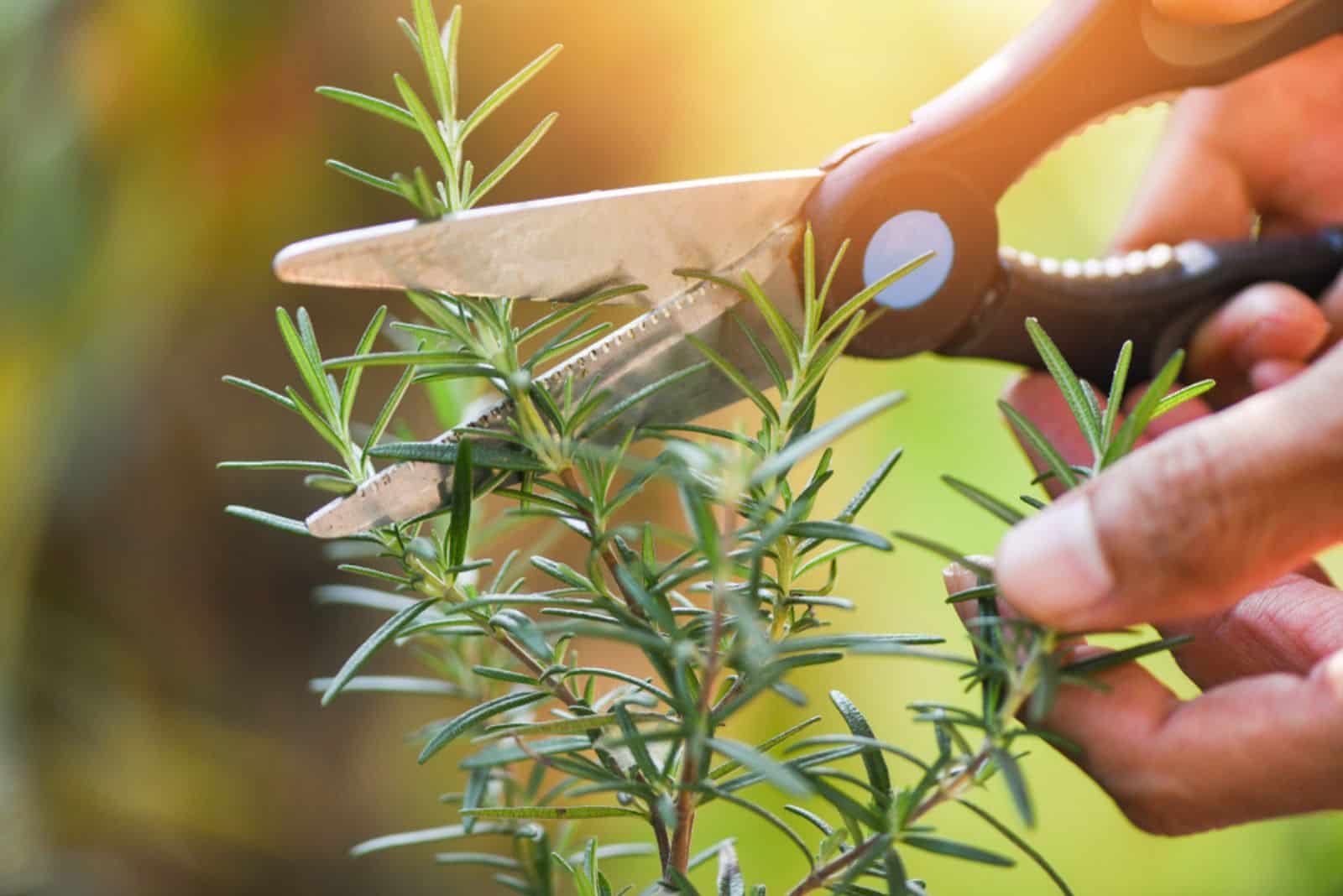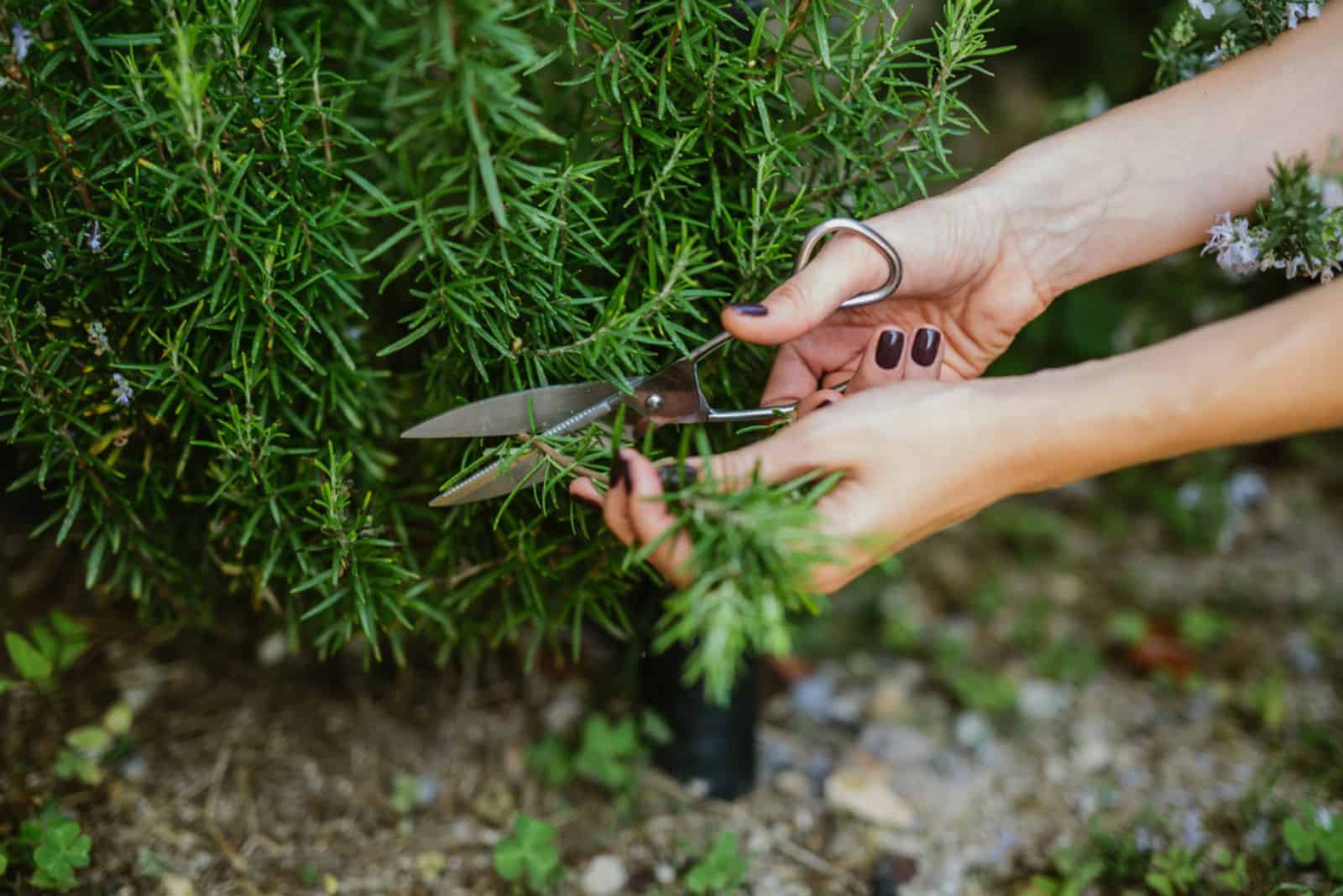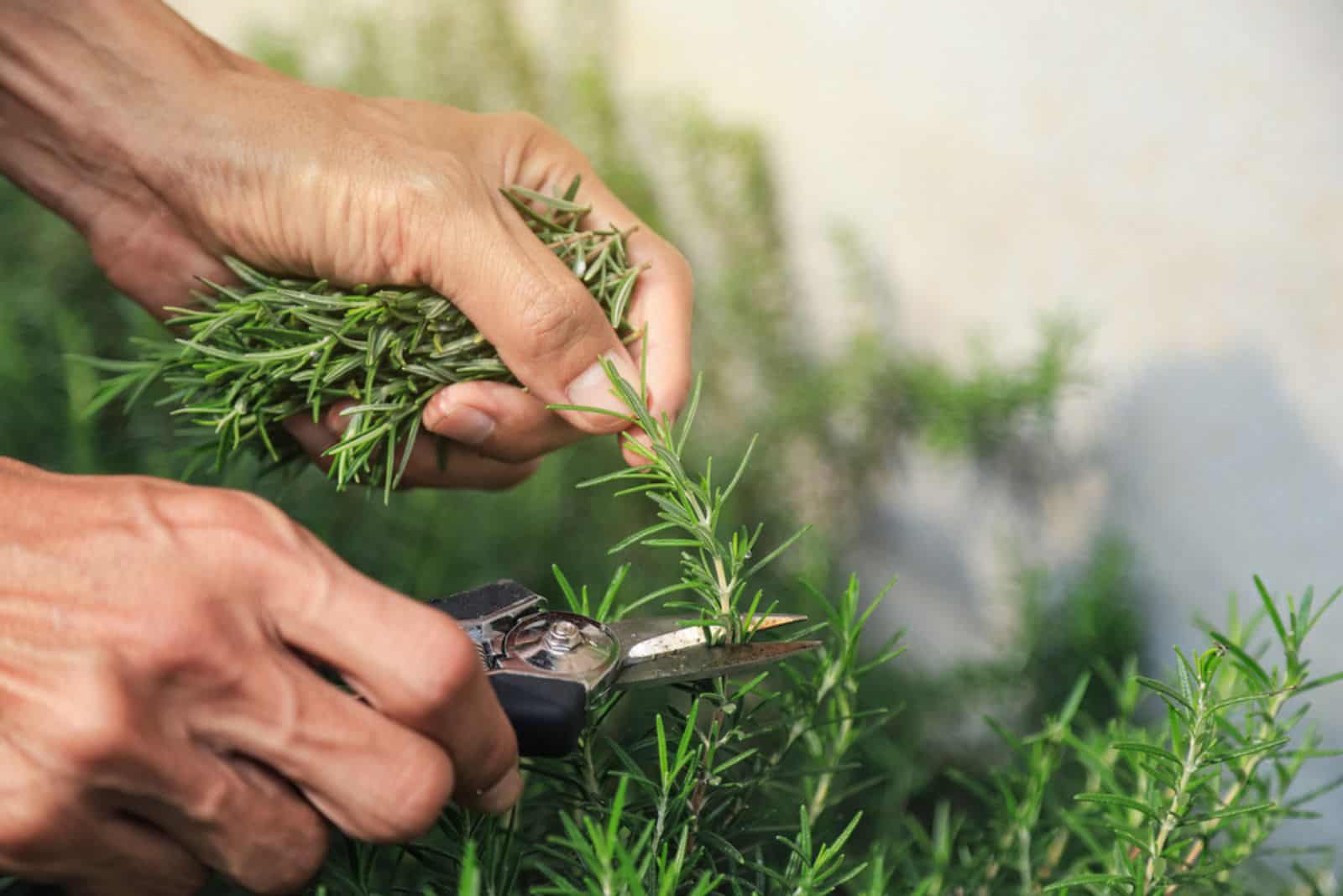Many gardeners dread pruning, which is after flowering in rosemary’s case.
That’s why I decided to help you out and let you know that it isn’t that scary, and actually carries a lot of benefits.
All you need is some simple tools and to trim it down to the desired length to control its growth. This will keep it vigorously growing and flowering for years to come.
Remember that rosemary is a herb that can quickly get woody if you neglect pruning, leaving it looking quite sad. But it’s nothing an annual snip can’t prevent.
Let’s dive in!
Tools You’ll Need
This process doesn’t require many tools, but you’ll still need a good pair of pruners and some loppers for thick woody stems and branches.
Before you do any of this, you need to make sure that your tools are clean and sharp enough. Dirty, blunt shears and loppers can spread infections to your plants and hurt them.
Luckily, you can easily clean these tools with dish soap and water, and disinfect them with rubbing alcohol. And to sharpen your pruners, all you need is a diamond blade.
How To Prune Rosemary
Whether you have an upright or trailing rosemary variety, you’ll have to prune it eventually. The best time to do this is after it finishes flowering and is vigorously growing, which should be in spring or early summer.
It’s important to avoid cutting back these plants in the cold since it can cause damage, so wait for warmer temperatures to do it safely. Also make sure that the first year’s frost is more than six weeks away to avoid cold damage.
Luckily, pruning this herb is quite a simple task, and you can start with deadheading spent flowers.
Afterwards, you can assess the situation and remove all the diseased, old, dry, damaged, and crossing parts.
From there, all you have to do is shorten the extra long branches, though this might require a tad more work on your part. Fortunately, this is the shaping part where you trim your plant as much or as little as you want.
Just make sure you don’t cut into any woody part below the tender stems as rosemary cannot grow from old wood.
But if you trim your bush during its growing season, you’ll have plenty of new stems to prune. You can remove up to a quarter of the entire plant, just make sure you avoid woody stems.
The key to pruning is cutting at a 45° angle and occasionally wiping the sap off your pruners to prevent it from building up and affecting the sharpness.
Check out this video for more useful tips:
So what are the reasons for pruning rosemary?
Well, the first one is to prevent it from becoming woody and keep it growing as densely as possible.
The other is to introduce more air circulation to the bush itself so you lower the risk of pest infestations and fungal infections caused by high humidity.
Another way to give your rosemary more airflow is to space it properly and prune the surrounding plants and branches that touch it.
Finally, rosemary plants generally don’t require fertilizer other than an annual top dressing with compost, and even that’s not strictly necessary. But if you want to encourage their growth, you can use some organic fertilizer after pruning.
Trimming To Promote Growth
Lightly pruning your rosemary bush once a year will keep it in shape and control its growth, but you can make it lusher if you want.
Cut off about 1-2 inches of the young tips about once a month and your rosemary will split, growing two new branches on that part. Start doing this on young plants and you’ll have bushy rosemary in no time.
Should You Cut It Back Hard?
If you don’t prune your rosemary regularly, it can quickly become leggy and woody with less and less foliage.
However, it cannot easily recover from hard pruning (sometimes not at all) as it doesn’t grow from old wood. That’s why you should never remove the younger branches completely.
A general rule of thumb is to never remove more than 1/3 of the entire plant when doing heavy pruning. And if you’re dealing with woody rosemary, it is much simpler to grow a new one from softwood cuttings and replace the older plant.
Finally, this plant is incredibly easy to grow and a perfect herb garden idea for beginners. Some plants can last up to 30 years, though you might need to replace some five years into growing them, even with careful pruning technique.
That’s why you should always root some cuttings after trimming this herb.
I hope this article was helpful.
Until next time!



